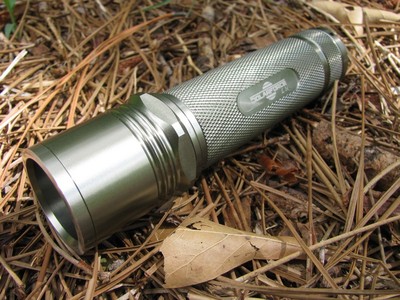When I started the Flashlight Wiki (now getting 100-200 visits a day), one of the sites that would turn up when I searched for "flashlight wiki" was a flashlight wiki on wikia.com. I had read an article about Wikia that it was a for-profit version of Wikipedia with fewer rules about subject matter. It is a good place for fans of TV shows, video games, etc. to go into endless detail about a subject, which Wikipedia would not allow.
So lately I have been playing a pinball game on my iPod. It is actually 3 different games bundled into Pinball HD: Wild West, The Deep, and The Jungle. Gameprom wrote the apps separately, starting with Wild West, which is decent, then The Deep which is a big improvement, and finally The Jungle which is more complicated featuring complex goals that involve shooting targets with a pinball to open up other steps which must be solved in order to open up further steps. For instance, you have to hit these three lights on one wall in order to raise a set of six targets somewhere else. When you knock down those six targets, three tiki cylinders rise up out of the board that you must hit repeatedly until they recede back into the table. With the tikis out of the way you must shoot the ball into a hole that they were guarding and this somehow kills King Kong and you get a bunch of points.
So I like these games. When we used to go to Patsy's house they had a pinball game called OXO which had a tic-tac-toe theme. I liked being able to play pinball for free at their house. Later on Windows bundled a pinball game in with Windows ME and Windows XP called Space Cadet. I played that a lot and got really good at it. Also I was playing Duke Nukem 3D around that time and downloaded the trial version of a Duke Nukem themed pinball game called Balls of Steel which had way better graphics than Space Cadet. When I got the iPod touch I looked around for pinball games and found Pinball HD. Unfortunately it is hard to get information about these games, one reason being that if you search for any iPod app you will get tons of results from people trying to refer you back to iTunes to buy the app so they can get a commission. They offer very little in the way of information and all have basically the same info, which is stuff lifted from the description on iTunes. Gameprom has forums about their games on their website, but those don't seem active either and seem to be concerned mostly with bugs in past versions of the software that have been fixed by now.
So lately I've been playing The Deep more than the other two games and I got to a point where I got a mission that I didn't understand how to accomplish. I wanted help on how to do that, but I couldn't find anything. I thought there should be a Wiki for this game because the included help is pretty lame. The help doesn't say how to accomplish the mission (most are self-explanatory: a little arrow points at something and you have to hit that with the ball). The help doesn't even say how many points you get for certain things. And there are some multiplier that you can activate, but I don't know what the multipliers are actually being multiplied with.
I didn't want to start a new Wiki since I already have the Flashlight Wiki and another smaller one I did for work that I'm not doing anything with right now, I thought a Wikia would be better. So I went to wikia.com and clicked to start a new one, which I called The Deep Pinball Wiki. It really was pretty easy: you pick a theme for the look of the Wiki, a title, a description, and you are ready to go. A lot of the games for the iPod have "achievements" that are special awards you get for doing certain things in a game. For instance, I have a Euchre game that gives you an achievement for going alone and winning all 5 tricks for 4 points, and another for going alone and then getting Euchred. So Wikia has an Achievement for creating a Wiki. Then when you create a page, that's an Achievement. When you make 5 edits, that's an Achievement. So it's like a game.
So one thing that would be helpful is to upload what the pinball board looks like. Although Space Cadet pinball was just a 2D board, Balls of Steel and the Gameprom pinball games are "3D" and the camera zooms along behind the ball giving you a view of part of the board. So you are seeing the board from different angles, up close, zoomed out, and so forth depending on what is going on. When I was writing about iPod keyboard software, I found out you could do a screen capture of the iPod. It is one thing to do that with a keyboard app, but it is more challenging to do a screen capture while you are in the middle of playing a pinball game, but I was able to get some screen captures and upload those (got an Achievement for that too).
